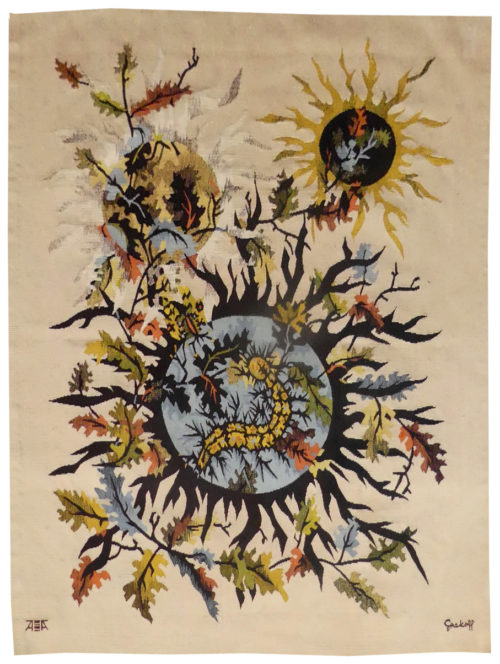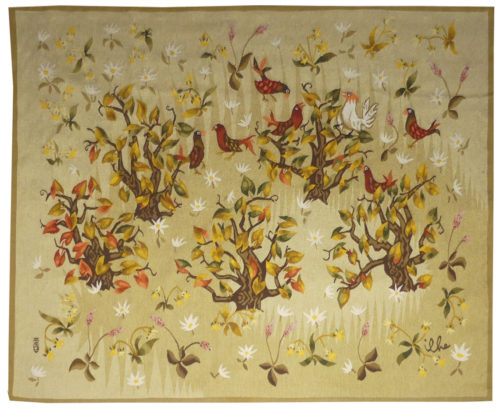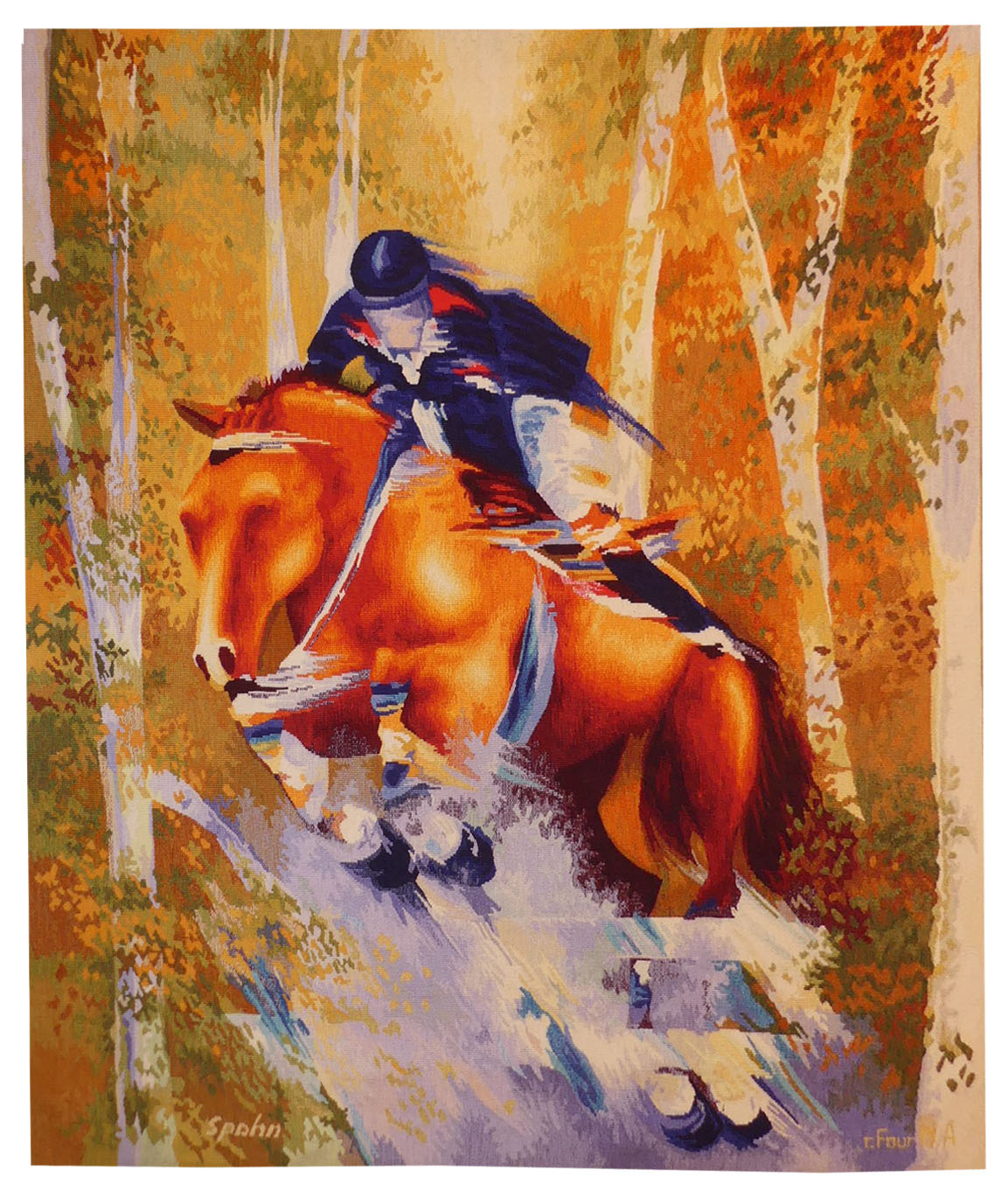Annick
Tapestry woven by the Angers workshop.
With label, n°1/6.
1968.
Elie Grekoff, whose aesthetic is similar to that of Lurçat, designed over 300 cartons
The motif of a sun radiating foliage is a classic with this artist ; it is possible that the title refers to a weaver at the Atelier de Tapisserie d’Angers (Angers Tapestry Workshop), which opened in the same year of 1968 and where Grekoff was the first painter-cartonnier to be produced.




